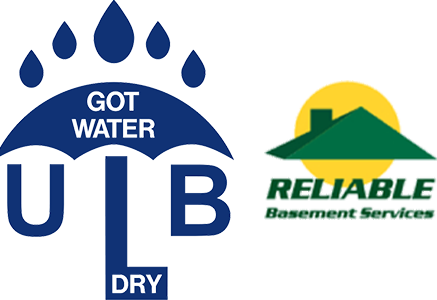When it comes to repairing basement seepage there are a two very different approaches commonly used to address problems caused by a leaking foundation wall crack. They would be a traditional internally applied epoxy or urethane injection or an external excavation and seal.
When dealing with a poured concrete foundation an epoxy injection is the preferred method of sealing cracks in the wall. In cases where a greater than normal number of foundation cracks are present or continued movement in the foundation is anticipated a urethane grout injection may be more applicable.
However there are situations where an external crack repair method is the better of the two options. A classic example of this would be when a custom finish has been applied to the face of the interior wall such as a stenciled paint job, one of a kind wallpaper or a mirrored panel. Any one of these could prove costly to remove and almost impossible to achieve an exact match when re-installing.
Block foundations and masonry foundation wall should never be repaired form the interior as unlike a poured concrete foundation the point of water penetration does not always co-ordinate with puddle on the floor.
When considering a foundation waterproofing company to seal an exterior foundation crack following,
How will they perform the exterior excavation ? Some companies hand dig while others will bring in a small back hoe to perform the excavation. When there is landscape and other immovable objects a large back hoe may create some un-foreseen damage. Far too many companies will excavate the entire hole with a post hole digger. While this does mean less disruption to the general area it may limit exposure of the entire crack. However posthole diggers can be useful when finishing off the lower part of the excavation.
Is there an existing coating or seal in place ? Any seal which had been previously installed must be removed down to a solid substrate. A crack over 1/8th inch in width will need to be patched smooth to the remaining wall.
What type of membrane system will be used ? No matter how dry the soil at the surface level may appear there will be a higher level of moisture in the soil the deeper down you dig. Bearing that in mind (unless you have the time to allow the foundation wall to dry out naturally) you will want to use a product that will adhere to a moist surface. Most common cold applied rubber membranes are meant to be used in new applications rather than remedial repairs.
What tends to happen is the exterior face of the membrane dries to the touch but because of the moisture trapped in the foundation will peel back off the wall like a giant band aid. Hot applied rubberized membrane require larger equipment for the installation process which
Products that have a “Volclay” base are formulated to bond securely to moist surfaces. Voclay or “Bento-nite” as it is commonly know is the same basic component found in clumping cat litter and disposable baby diapers.
But do not be fooled by a company which will only use the “Bento-Nite” in it’s raw powder form alone. First the “Bento-nite” powder must get wet to activate and secondly without additives such as polymers and Butyl rubber the powder will then dry back out. As this cycle continues (wet-dry-wet-dry)the amount of water absorbed by the powder decrease until eventually the powder absorbs little to no water at all. This is when will incur repair failure.
But the good news is that, as technologies improve, there are an increasing number of rubber based sealants on the market which contain sufficient additives to help insure proper adhesion to moist surfaces. You will have to spend a little more as these will tend be the more expensive applications. Be sure not to get fooled by lesser quality imitations.
Written by Walter Slowinski





